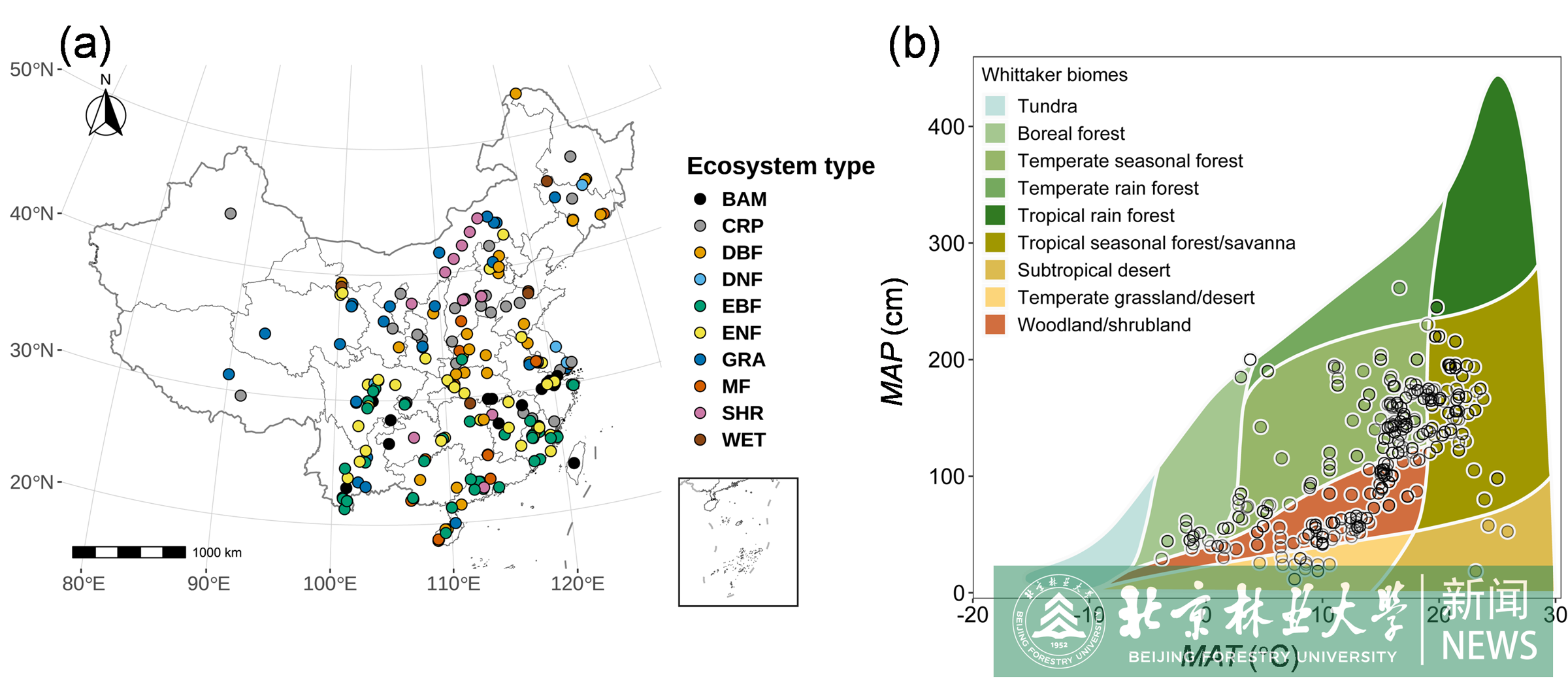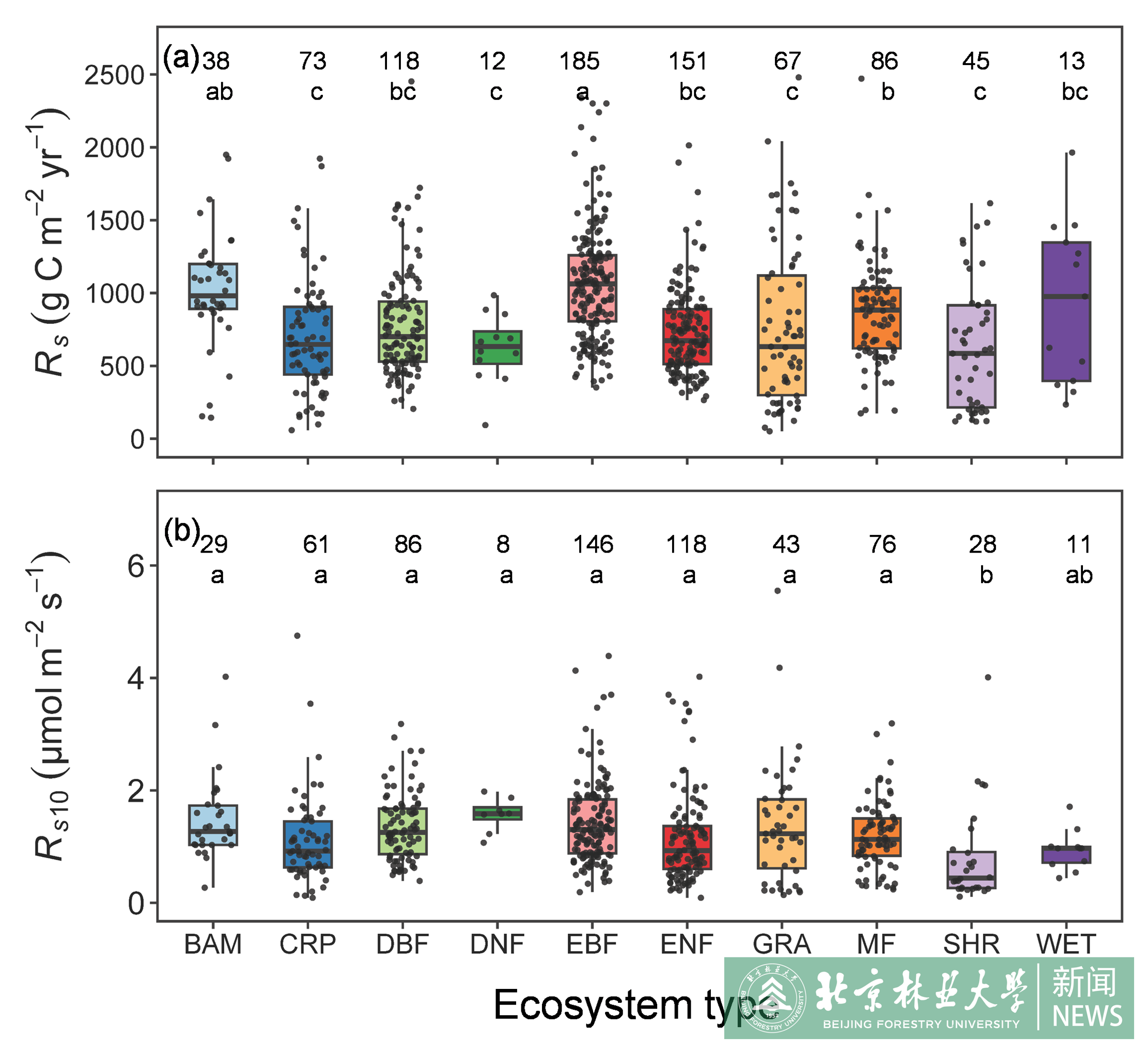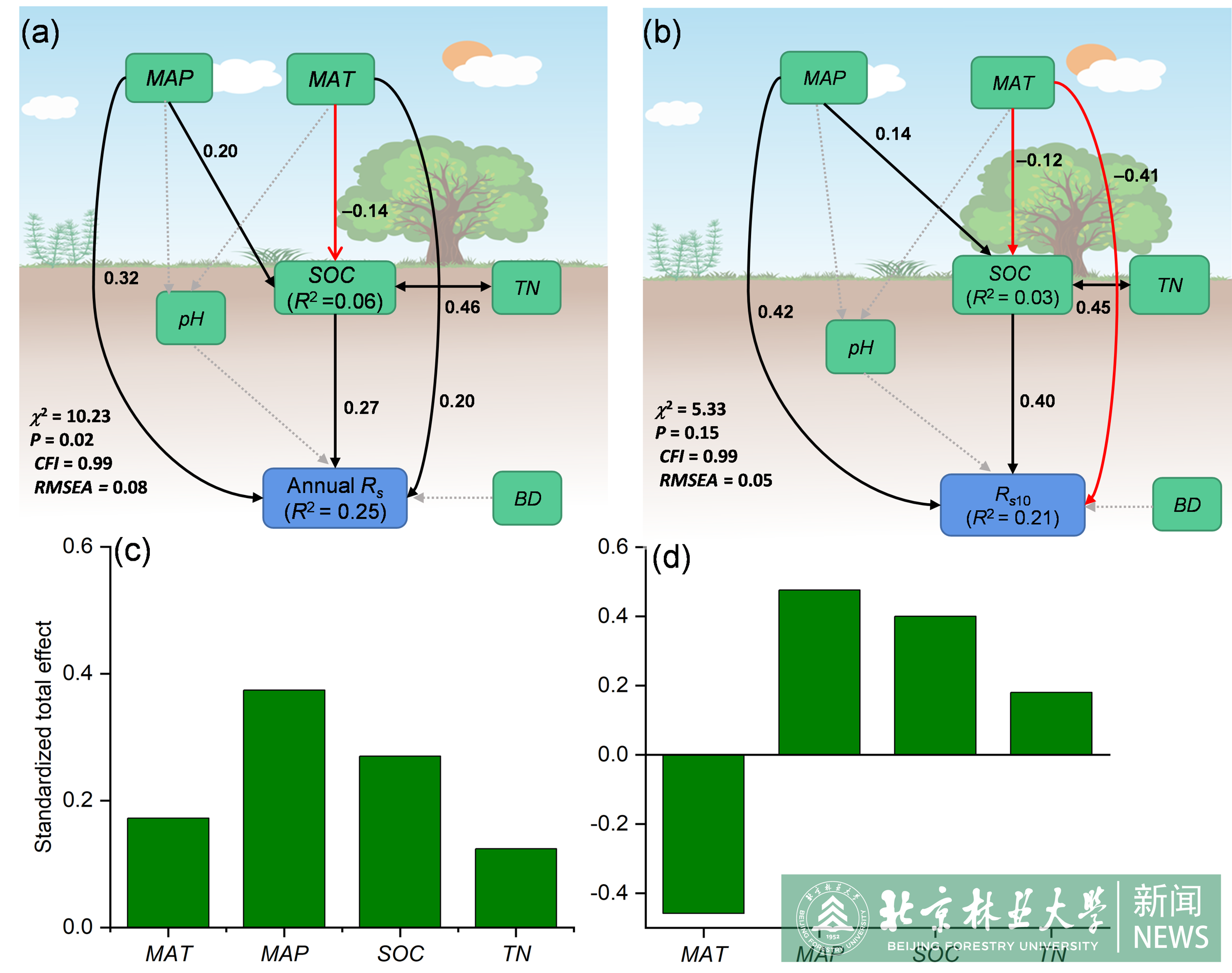Latest news
A collaborative research team led by Professor Jia Xin from Beijing Forestry University's School of Soil and Water Conservation, alongside partners from the Institute of Geographic Sciences and Natural Resources Research (Chinese Academy of Sciences), the University of New Brunswick (Canada), the University of Helsinki (Finland), and the Chongqing Institute of Geology and Mineral Resources, has made significant strides in understanding spatial variations of soil respiration across China's terrestrial ecosystems. Published in the prestigious soil science journal Catena,their paper "Biogeographic variations in soil respiration and its basal rate across China suggest thermal adaptation, substrate limitation, and soil moisture constraint", synthesizes data to analyze how climate, soil properties, and biological factors drive soil respiration patterns.
Understanding the spatial variations in ecosystem carbon (C) fluxes is essential for predicting regional C budgets under future climate and land use change. Biogeographic variations and regulating factors of soil respiration (Rs) and its basal rate (e.g., at 10 °C, Rs10) remain largely uncertain. The research team synthesized 788 and 606 records of annual Rs and Rs10, respectively, from 357 published papers to examine how Rs and Rs10 vary spatially across China and as a function of environmental factors.
Annual Rs ranged 51–2480 g C m−2 yr−1 across sites. It increased with increasing mean annual air temperature, potential evapotranspiration (PET), and soil temperature, and decreased with increasing latitude and altitude, whereas Rs10 exhibited the opposite trend. Negative Rs10–temperature relationships suggest higher respiratory activity in colder areas, possibly a result of the thermal adaptation of Rs. Annual Rs was significantly enhanced by increasing mean annual precipitation (MAP) and aridity index (i.e., AI, ratio of MAP to PET), but Rs10 was not correlated with MAP and was less sensitive to AI. Both annual Rs and Rs10 showed a unimodal relationship with soil moisture and increased linearly with soil organic C and total nitrogen (N). However, neither annual Rs nor Rs10 was correlated with soil C:N, suggesting that Rs was constrained by soil water, substrate, and nutrient availability, but was less affected by substrate quality. Multivariate analyses (random forest analysis, hierarchical variance partitioning, relative weight analysis, and structural equation modeling) generally supported the patterns observed from bivariate relationships.The study suggests thermal adaptation, substrate limitation, and soil moisture constraint of Rs at the regional scale. Accordingly, terrestrial C cycle models should adequately consider the dependence of the basal rate of Rs on climatic and soil factors to accurately predict regional C budgets.



Guo Zifan, a doctoral student at the College of Soil and Water Conservation, served as the first author of the paper, with Professor Jia Xin as the corresponding author.This study was supported by the National Key Research and Development Program of China (No. 2023YFF0805604), the Third Xinjiang Comprehensive Scientific Expedition (No. 2022xjkk0201), the National Natural Science Foundation of China (NSFC, No. 32071843, U22A20504, and 32071842), the Research Council of Finland (project 341294), and the Fundamental Research Funds for the Central Universities (No. PTYX202425 and PTYX202426). The U.S.–China Carbon Consortium (USCCC) promoted this work by providing opportunities for discussion and exchange of ideas.
Paper link: https://doi.org/10.1016/j.catena.2025.108992
Written by Guo Zifan
Translated and edited by Song He
Reviewed by Yu Yangyang










